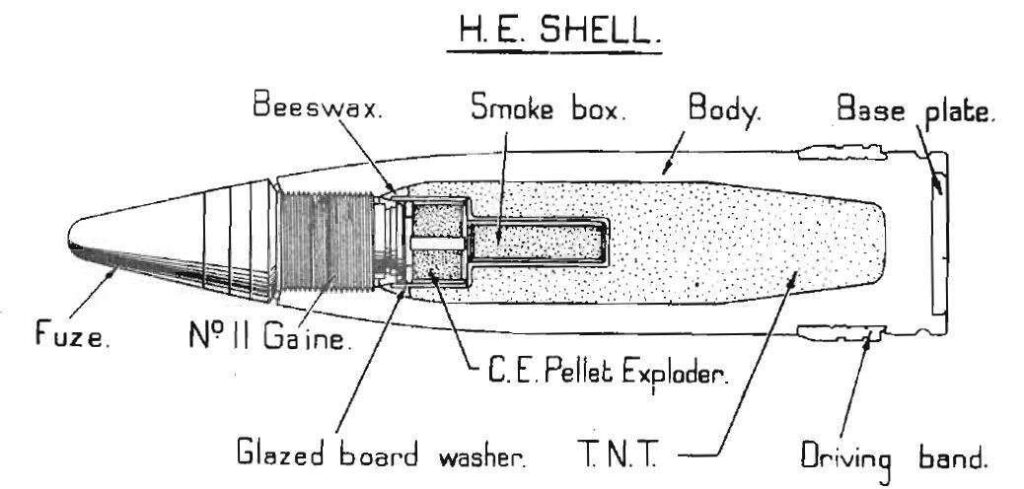On Friday 25th June, 1st Line Defence were contacted to investigate a suspect item found during excavation works on a construction site in North London.
One of our senior UXO Specialists attended the site and inspected the suspicious item, identifying it as a live unexploded WWII-era 3.7 inch Anti-Aircraft Projectile. We coordinated the evacuation of the site and contacted Metropolitan Police and emergency responders.
An EOD team arrived on-site at 6.10pm and prepared the projectile for demolition. The item was successfully and safely disposed of at 7.35pm, and the remnants collected and removed from site.
It is not uncommon to encounter unexploded Anti-Aircraft Projectiles in the UK. They were fired in their millions, and not all functioned as designed with some falling back to earth unexploded.
It is presumed that this projectile originated from one of the Heavy Anti-Aircraft batteries in the area.
Defending the UK from Aerial Attack during WWII
During WWII, the War Office employed a number of defence tactics against the German Luftwaffe bombing major towns, cities, manufacturing areas, ports and airfields. These were broadly divided into ‘passive’ and ‘active’ defences.
Active Defences
- Anti-aircraft gun or rocket emplacements to engage enemy aircraft.
- Fighter aircraft to act as interceptors.
Passive Defences
- Blackouts and camouflaging to hinder the identification of Luftwaffe targets.
- Decoy sites were located away from targets and used dummy buildings and lighting to replicate urban, military, or industrial areas.
- Barrage balloons forced enemy aircraft to greater altitudes.
- Searchlights were often used to track and divert adversary bomber crews during night raids.
WWII Anti-Aircraft Artillery
During WWII, three main types of gun sites existed: heavy anti-aircraft (HAA), light anti-aircraft (LAA) and ‘Z’ batteries (ZAA – or ‘Rocket Batteries’).
If the projectiles and rockets fired from these guns failed to explode as designed they could descend back to land unexploded.
They were not designed for penetration, so are generally found at quite shallow depths. If encountered, these unexploded projectiles can pose a significant risk.
3.7 inch Anti-Aircraft Projectile
The 3.7 inch calibre gun was designated as heavy anti-aircraft artillery. This large Quick Firing (QF) gun was used to engage high flying enemy bombers. It fired 3.7 inch projectiles, weighing some 13kg, at a rate of ten to twenty rounds per minute.
The projectiles were usually fitted with a mechanical time fuze, with a high explosive fill of TNT/RDX.
Schematic diagram of a 3.7 inch Anti-Aircraft Projectile
Watch a video of the detonation
Video showing the detonation of the 3.7 inch Anti-Aircraft Projectile found by 1st Line Defence in North London
Got a question?
If you have any questions about UXO Support or UXO risk mitigation in general, contact one of our Sales Team on + 44 (0) 1992 245020 or info@1stlinedefence.co.uk












